Non-venomous snakes are snakes that are not venomous enough to be fatal to humans or other animals. Although they are not a threat to human life, they still need to be handled with care as they may bite and cause pain and other discomfort. There are currently more than 3,000 species of snakes in the world. There are more than 200 species of snakes known in China, of which more than 50 species are venomous and the rest are non-venomous. This article will take stock of the ten most common non-venomous snakes in China. These snakes are widely distributed and plentiful. Although there are many non-venomous or slightly venomous snakes, if you are not familiar with snakes, it is best to avoid them if you encounter them. Take chances.
The following are the top ten common non-venomous snakes in China:
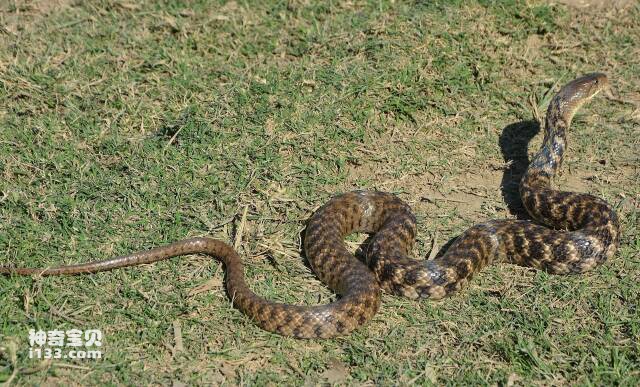
1. Xenochrophis piscator
The grass snake is one of the common non-venomous snakes in China. It lives in plains, hills or mountainous farming areas. It often appears by small rivers and mountain streams in search of prey. It likes to prey on frogs, fish, insects, rats, etc. It is a beneficial snake. , is also a common non-venomous small and medium-sized colubrid snake. Distributed in Yunnan, southern Guizhou, Guangdong, Guangxi, Hunan, Fujian, Taiwan, Jiangxi, Zhejiang, Shaanxi and other places in China. The body length can reach 1.5 meters. There is a fine black line under the eyes and behind the eyes extending to the upper lip. The body color is mostly olive brown and covered with many irregular black patterns.

2. Ptyas mucosus
The mouse snake is a non-venomous snake found in southern China and Southeast Asia. Their bodies often appear in bright colors such as red, yellow, or orange, sometimes with black or white stripes or spots. Rat snakes mainly live in environments such as mountains, hills and grasslands, feeding on rodents, small birds and other reptiles. They are excellent climbers, often moving and resting on branches, and are also adapted to crawling on the ground. Mouse snakes get their name from their predatory behavior, often sneaking up on rodents and attacking like a cat hunting a mouse. Although mouse snakes are not venomous, their teeth can still inflict pain and pierce human skin, so they need to be handled with caution. Due to their beautiful appearance and easy breeding, mouse snakes are relatively common in the pet trade market. If you want to keep a mouse snake as a pet, you need to know the relevant knowledge and skills of raising it, and make sure to provide suitable habitat and food.
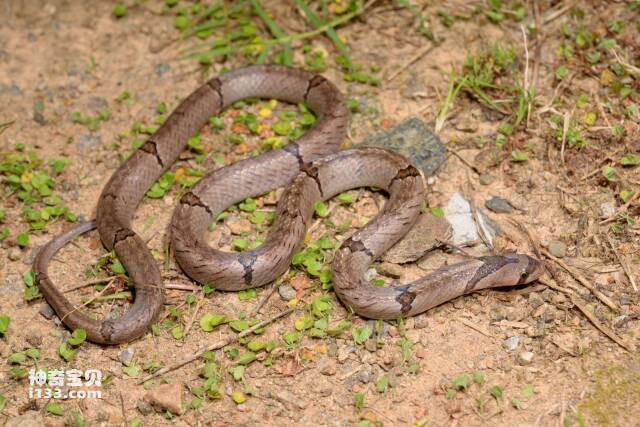
3. Oligodon chinensis
The Chinese small-headed snake, commonly known as the pole snake, belongs to the genus Microcephalus in the family Colubridae. It is non-venomous and about half a meter long. It is distributed in mountainous areas and plains. It is produced in Jiangsu, Anhui, Zhejiang, Jiangxi, Fujian, Henan, Hunan and Guangdong. , Hainan, Guangxi, Guizhou, Yunnan and other provinces and regions. They have slender bodies, usually between 1-1.5 meters in length, and can reach a maximum length of about 2 meters.
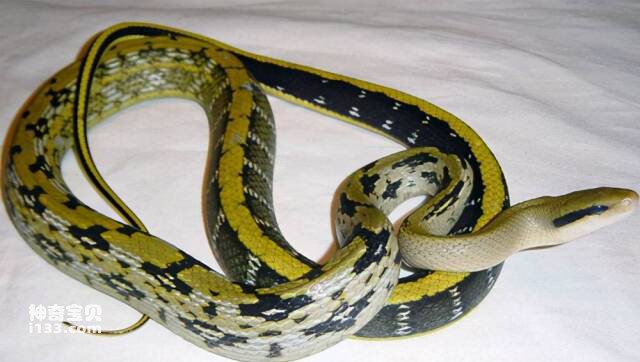
4. Elaphe carinata
The black-browed elaphe is a large, non-venomous snake found in southern China and Southeast Asia. Their bodies are usually light brown or gray, with black spots and slender black vertical lines on their backs, and obvious black eyebrow lines around their eyes, which are their distinguishing features. The black-browed snake lives in environments such as mountainous areas, forest areas, and grasslands, and feeds mainly on rodents, small birds, and other reptiles. They are excellent climbers and often move and rest on tree branches. Since the black-browed snake is non-venomous, it poses little danger to humans. Due to its beautiful appearance, docile personality and easy breeding, the black-browed snake is relatively common in the pet trade market. If you want to keep a black-browed snake as a pet, you need to understand the relevant knowledge and skills of raising it, and ensure that you provide suitable habitat and food. It should be noted that the black-browed snake is a wild animal and should not be captured or taken home as a pet without permission. Violations of wildlife protection laws will be punished by law.
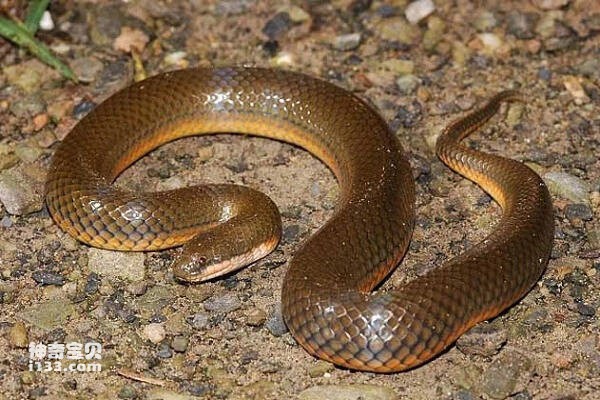
5. Yellow-cheeked Water Snake (Enhydris subtaeniata)
The yellow-cheeked water snake is a non-venomous aquatic snake found in southern China. Their bodies are usually dark brown or gray with distinct yellow or orange cheek patches. Yellow-cheeked water snakes mainly live in water environments such as rivers, lakes and swamps, feeding on fish, frogs and small mammals. They are excellent swimmers and divers, often in the water and looking for food. It should be noted that although the yellow-cheeked water snake is not a venomous snake, you should still exercise caution to avoid accidental injuries. When handling or observing yellow-cheeked water snakes, you should avoid touching or irritating them as much as possible to ensure their safety and your own safety. Yellow-cheeked water snakes have become one of the popular pets in some countries because of their beautiful appearance and lively personality. However, before considering keeping them as pets, you need to understand the relevant breeding knowledge and skills to ensure their health and happiness and the need to comply with local wildlife regulations.
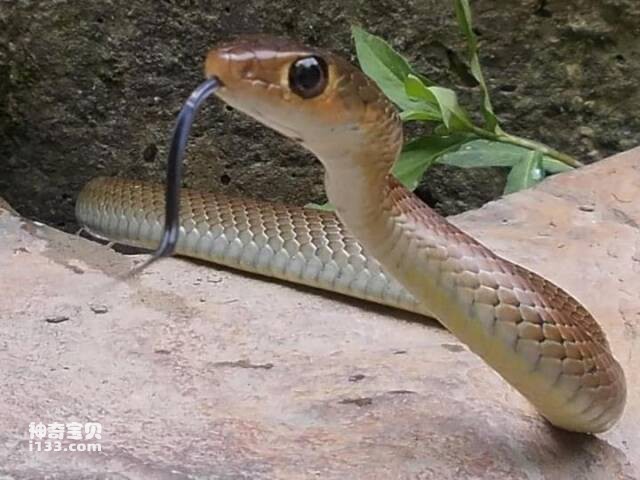
6. Gray rat snake (Elaphe taeniura)
The gray rat snake is a large, non-venomous snake found in southern China and Southeast Asia. Their bodies are usually light brown or gray, with horizontal dark stripes on their backs that sometimes extend down their sides and onto their abdomens. Gray rat snakes mainly live in environments such as forests, hills, grasslands and farmland, feeding on rodents, small birds and other reptiles. They are excellent climbers and often move and rest on tree branches. Since gray rat snakes are not venomous, they pose little danger to humans. They are usually docile and easily domesticated as pets, and are widely bred internationally. It should be noted that if you want to keep a gray rat snake as a pet, you need to understand the relevant breeding knowledge and skills, and ensure that you provide suitable habitat and food. At the same time, local wildlife protection regulations should be observed and illegal capture or trade should not be carried out.
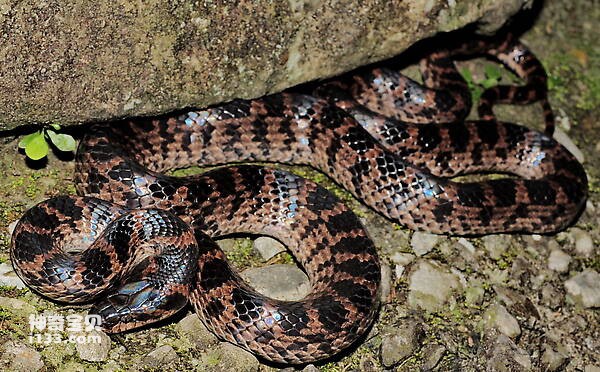
7. Red-spotted snake
The scientific name of the red-spotted snake is the red-chained snake. It belongs to the family of reptiles, order Colubridae, and is widely distributed in China. It is non-venomous but has a fierce temperament. It has a black back and a herringbone red stripe from the top of its skull to the back of its neck. It mostly lives in fields, rivers, hills and nearby areas. Water zones also appear around homes. Red chain snake venom is clinically used to treat chronic tuberculous fistulas. It has anti-inflammatory, analgesic, hypnotic, sedative and anticonvulsant pharmacological effects, and has high medical research value. It is lazy and inactive, crawls slowly, but moves quickly when frightened, and has clear hunting targets. It mainly feeds on toads, small freshwater fish, loaches, chicks, young birds and rodents. This snake has a snake-eating habit and will eat its own kind when the food supply is insufficient. Care should be taken when breeding.
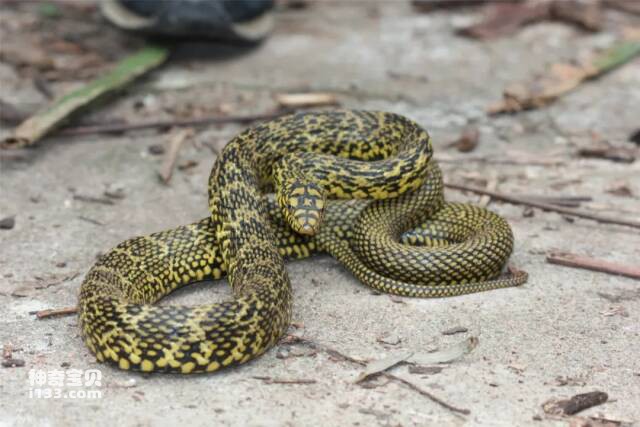
8. Elaphe dione
The king snake is a non-venomous snake distributed in China, also known as the Chinese king snake. Their bodies usually have brown, gray or black stripes or spots and are very similar in appearance to North American king snakes. King snakes are very common in rural areas of my country. They are named because of the pattern on their heads that resembles the word "king". This kind of snake is larger and non-venomous. It relies on its strong body and strong winding power to hunt its prey. It is a large snake common in temperate zones. King snakes mainly live in environments such as mountains, hills and woodlands, and feed on rodents. They have a docile character and are suitable for viewing and keeping as pets. It should be noted that before considering keeping a Chinese king snake as a pet, you should understand the relevant breeding knowledge and skills and ensure that appropriate habitat and food are provided. At the same time, local wildlife protection regulations should be observed and illegal capture or trade should not be carried out.
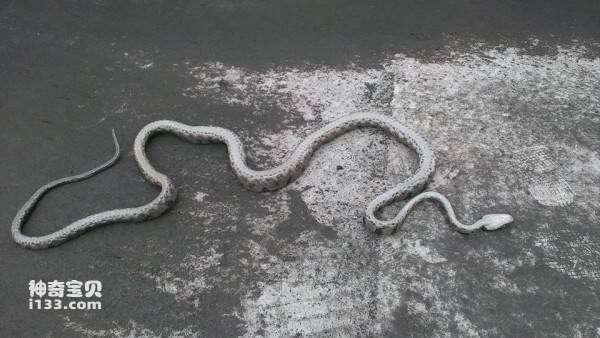
9.Coluber jugularis
The belly snake, also known as the weather snake, bandit snake, etc., is a venomous snake in the family Pearl Snake in China and is distributed in many provinces such as Jiangxi, Guangdong, and Fujian. The belly-turning snake has a unique appearance, with a low body and its head turned up forcefully, exposing its abdomen, hence its name. The belly snake mainly feeds on mice, lizards, frogs, etc. and does not pose much threat to humans. But don’t hunt and kill on your own! Although bluebell snakes are not venomous, they are capable of escaping and attacking quickly and can engage in lengthy pursuits. When frightened or provoked, they adopt an extremely intimidating stance to protect themselves.
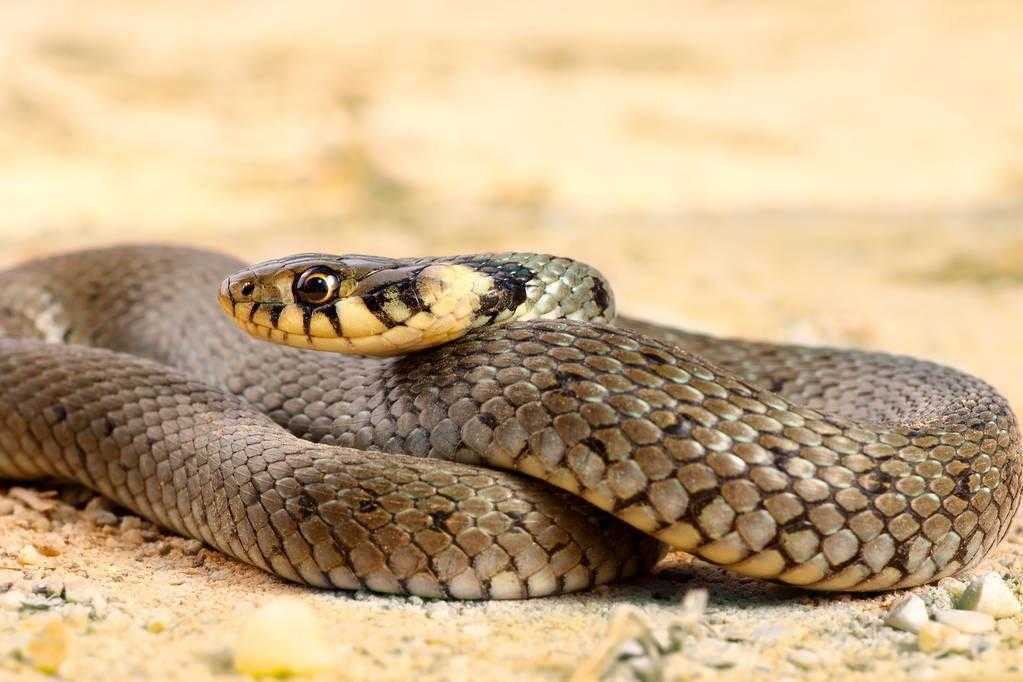
10. Money snake (scientific name: Boiga multomaculata)
The money snake is a medium-sized non-venomous snake that lives in Asia. It is also known as the multi-spotted krait or the colorful krait. Its body length is generally between 1-2 meters, and can reach up to 3 meters. Money snakes are mainly distributed in southern China, Southeast Asia and the Malay Archipelago, inhabiting environments such as forests, shrubs, grasslands, farmland and urban parks. The body of the money snake is thick and brown or yellow-brown, with many irregular black spots or stripes on its back. Unlike other snakes, their eyes are relatively large and their heads are much smaller than their bodies. Although the money snake is not venomous, it is highly aggressive and defensive and will adopt an aggressive stance and bite if frightened or provoked. Therefore, you should be cautious when encountering money snakes and avoid touching or irritating them as much as possible. At the same time, the prey of the money snake is mainly birds and small mammals, which can play a certain ecological role. Therefore, we should respect the natural ecological environment of money snakes and not bring them into our homes as pets.
There are many species of nonvenomous snakes in the world, and these snakes typically consume small mammals, birds, reptiles, insects, and other invertebrates as their food. Nonvenomous snakes often look similar to venomous snakes, so distinguishing them can be difficult. If you encounterIf you are unsure whether a snake is venomous or not, keep your distance and try not to come in contact with it. It’s best to ask a professional to handle it.
animal tags:
We created this article in conjunction with AI technology, then made sure it was fact-checked and edited by a Animals Top editor.